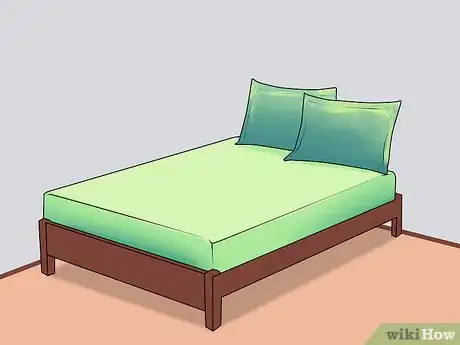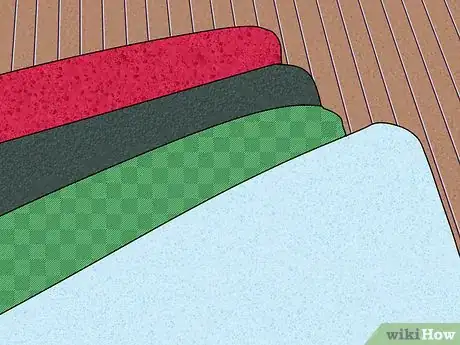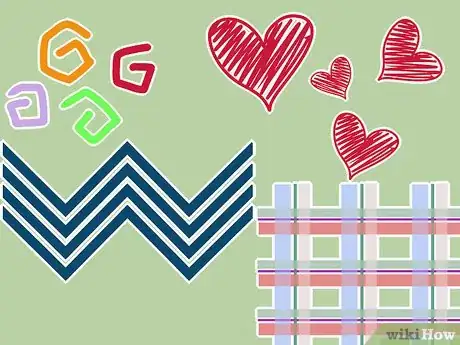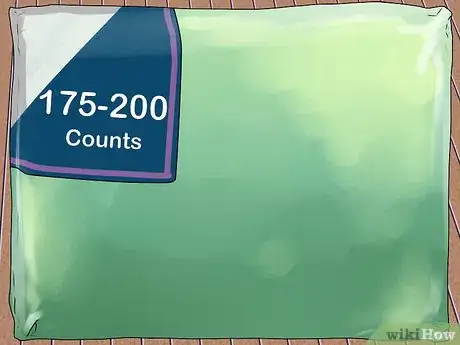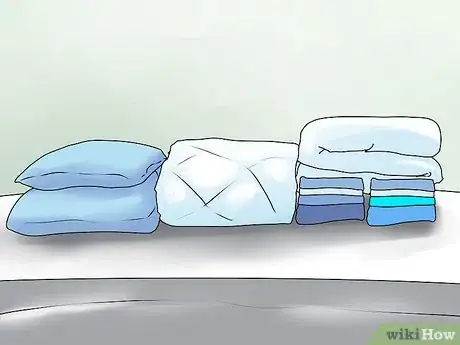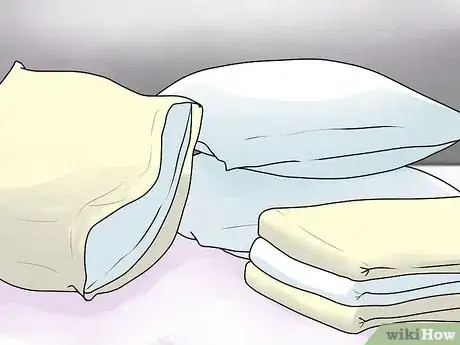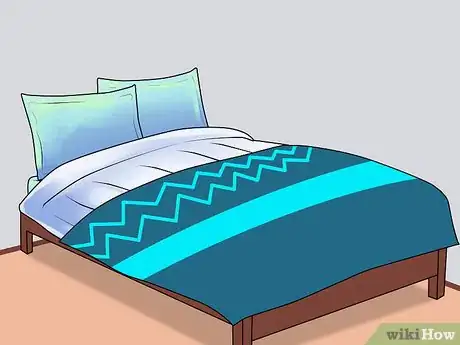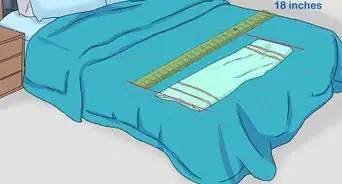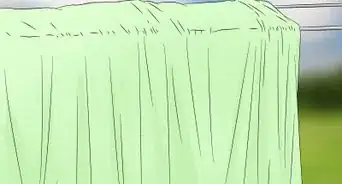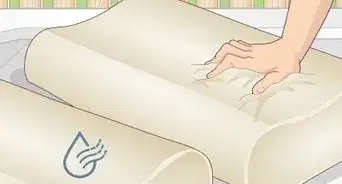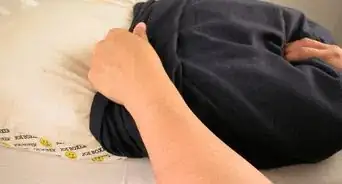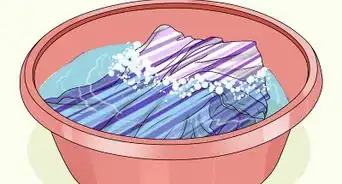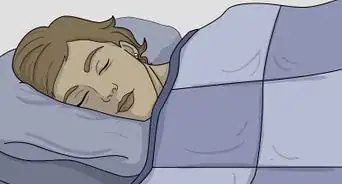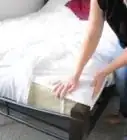This article was co-authored by Suzanne Lasky, ASID. Suzanne Lasky is an Interior Designer and the Founder of S Interior Design, a design consulting company based in Scottsdale, Arizona specializing in new home builds, home remodels, and all related design options for residential and small business clients. Suzanne has over 19 years of interior design and consulting experience. She is an Allied Member of the ASID (American Society of Interior Designers). She earned a Master of Business Administration (MBA) from Indiana University and an AAS in Interior Design from Scottsdale Community College.
There are 10 references cited in this article, which can be found at the bottom of the page.
This article has been viewed 114,762 times.
Are you stumped by the massive array of bedding that stores seem to offer? Choosing the perfect bedding can be overwhelming, but knowing what you want before heading to the store can ease your stress. You want to be comfortable when you’re sleeping, so take your time and have fun while choosing bedding that suits your needs and personality.
Steps
Buying Sheets
-
1Choose sheets that will fit your mattress. Find out which size you need to purchase by checking the tag on your mattress. Queen and King are the easiest bedding sheet sets to find in stores, while Full and Californian King are a bit more rare. Twin bedding sets are usually made for single-person beds.[1]
- Look for fitted sheets that are deep enough to fit over the mattress, and take mattress thickness into consideration.
- Twin sheets are typically 39 x 75".
- Full sheets are typically 54 x 75".
- Queen sheets are 60 x 80".
- King sheets are 76 x 80".
-
2Choose a sheet material. The type and quality of fabric you choose will affect how comfortable you are as you sleep, so choose wisely; cotton or cotton blends are the most recommended choice. Flannel sheets can keep you warm in the winter, but on warmer evenings you could be too hot in flannel sheets.[2]Advertisement
-
3Decide on a style and theme for your sheets. Do you want a stripe, polka dot, or a floral design? The bedding is the first thing that people will notice when they walk into your bedroom, so select bedding that matches your tastes. If you want to make an impression, choose bold colors; if you would rather display understated bedding, choose muted, cool colors such as dark blue or grey.
-
4Check the thread count on the label. Thread count refers to the density of the weave in threads per square inch. The higher the thread count is, then the more expensive the sheets are because more material, spun more finely, is needed to make them. Higher thread count indicates better quality. At minimum, your thread count should be 175-200, but for quality sheets, aim for a thread count of 350.[3]
Selecting Bedspreads
-
1Select a comforter that matches your sheets. Pick a comforter that matches the theme and style that your bedroom expresses. If you live in a warm climate, consider a lightweight comforter. Thick, heavy comforters are ideal for cold climates.[4]
-
2Choose a duvet. A duvet is a removable cover typically made of down feathers. It should be spread over your sheets. If you choose to use a duvet, you most likely will not need a comforter as well. But you should purchase a duvet cover to protect the duvet. [5]
-
3Consider buying a bedding set. Most bedding sets come with a fitted sheet, a top sheet, a comforter, and one or two pillowcases. This packaged deal can be an easy way to save money. You may need to buy a blanket or additional bedding separately.[6]
Displaying Decorative Bedding
-
1Buy pillows and pillowcases. Remember to supply yourself with pillows and pillowcases, since no bed is complete without a place to rest your head. If possible, buy pillowcases that match your sheets and comforter. Small throw pillows can be a colorful and fun accent to your bedding.
-
2Incorporate a quilt. A patterned quilt can add a splash of color to your bedding. It can also give your bed a more comfortable and unique feel. Spread the quilt over the bedding, or fold it and place it at the foot of the bed.[7]
-
3Wash your new bedding. Check that your machine can handle the load of bedding. Some comforters may require that you to take them to be professionally dry cleaned, or you can bring them to a Laundromat, which tend to have a few larger machines for this purpose. Be patient and follow the care directions (found on the product's tag).[8]
- If washing at home or at the Laundromat, avoid using harsh detergents. Use the extra rinse cycle. Allow the comforter about 3-4 hours to dry completely.[9]
Expert Q&A
Did you know you can get expert answers for this article?
Unlock expert answers by supporting wikiHow
-
QuestionWhat bedding do you need?
 Suzanne Lasky, ASIDSuzanne Lasky is an Interior Designer and the Founder of S Interior Design, a design consulting company based in Scottsdale, Arizona specializing in new home builds, home remodels, and all related design options for residential and small business clients. Suzanne has over 19 years of interior design and consulting experience. She is an Allied Member of the ASID (American Society of Interior Designers). She earned a Master of Business Administration (MBA) from Indiana University and an AAS in Interior Design from Scottsdale Community College.
Suzanne Lasky, ASIDSuzanne Lasky is an Interior Designer and the Founder of S Interior Design, a design consulting company based in Scottsdale, Arizona specializing in new home builds, home remodels, and all related design options for residential and small business clients. Suzanne has over 19 years of interior design and consulting experience. She is an Allied Member of the ASID (American Society of Interior Designers). She earned a Master of Business Administration (MBA) from Indiana University and an AAS in Interior Design from Scottsdale Community College.
Interior Design Consultant The options are exponential — not only how they look, how they feel and what they cost. Part of it is how people live: how they want to make their bed in the morning, and what temperature control they like, and how many layers they want. To make a beautiful looking bed you want layers. You want your mainsheet, your top sheet, your blanket or coverlet, and then your duvet with duvet insert. So some people really want that finished, layered look and other people want it clean and simple.
The options are exponential — not only how they look, how they feel and what they cost. Part of it is how people live: how they want to make their bed in the morning, and what temperature control they like, and how many layers they want. To make a beautiful looking bed you want layers. You want your mainsheet, your top sheet, your blanket or coverlet, and then your duvet with duvet insert. So some people really want that finished, layered look and other people want it clean and simple. -
QuestionHow can I buy just pillowcases for my pillows?
 Community AnswerTarget or Walmart carry them. You can order them online.
Community AnswerTarget or Walmart carry them. You can order them online. -
QuestionWhat do I do if I have a king sized bed, but prefer standard pillows?
 Community AnswerYou can have whatever bedding on your bed that you like. If you prefer standard pillows, then purchase the pillows separately from your bedding set and use them anyway.
Community AnswerYou can have whatever bedding on your bed that you like. If you prefer standard pillows, then purchase the pillows separately from your bedding set and use them anyway.
References
- ↑ http://www.thriftyfun.com/Saving-Money-On-Bedding-1.html
- ↑ https://www.overstock.com/guides/bedding-buying-guide
- ↑ http://www.hgtv.com/design/rooms/bedrooms/10-tips-for-buying-bedding-pictures
- ↑ http://www.bhg.com/homekeeping/laundry-linens/linens/bed-sheet-buying-guide/
- ↑ https://www.craneandcanopy.com/pages/101-duvet-vs-comforter
- ↑ https://www.wayfair.com/ideas-and-advice/the-ultimate-guide-to-bedding-S6279.html
- ↑ https://www.outdoorline.sk/en/content/56-advantages-of-quilts
- ↑ https://www.remodelista.com/posts/laundry-logic-20-tips-for-taking-care-of-your-bedding-how-to-best-wash-sheets-and-blankets/
- ↑ http://www.goodhousekeeping.com/home/cleaning/tips/a32064/washing-sheets-mistakes/
- ↑ Suzanne Lasky, ASID. Interior Design Consultant. Expert Interview. 31 March 2020.
About This Article
If you're not sure what you should be looking for when you're buying bedding, don't worry—there are really just a few simple things you'll want to keep in mind. First, you'll need to decide what material you want your sheets to be. Cotton and cotton blends are usually your best bet, although flannel sheets will provide more warmth during the winter. You also want to pay attention to the thread count on the sheets you're buying. The higher the thread count, the nicer (and more expensive) the sheets. For quality sheets that aren't too pricey, aim for a thread count of 350. For your bedspread, you have a couple of options. You can either choose a comforter that matches your sheets, or you can go with a duvet. With a duvet, you can buy a duvet cover and switch the cover out with a different one if you ever want a new color or print. For more expert bedding advice, check out the full article below!
